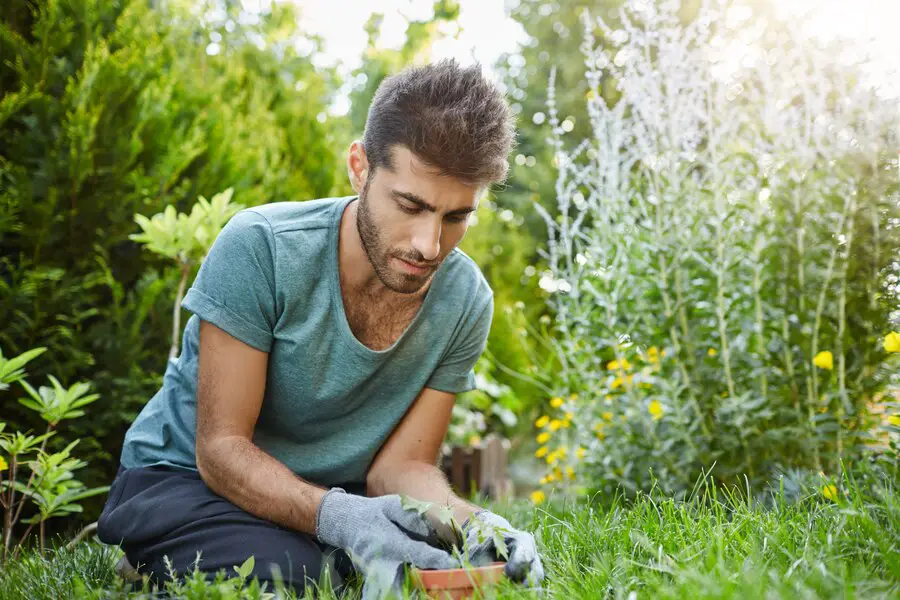
Lawn care is essential for maintaining a beautiful, healthy yard. One of the most common issues homeowners face is bald patches in the grass. These unsightly areas can stem from various causes such as disease, pests, or even environmental factors. Fortunately, there are effective solutions to restore your lawn’s lush, green appearance. Here’s a comprehensive guide on how to repair bald patches in your lawn effectively.
Identify the Cause of Bald Patches
Before you can fix bald patches, it’s crucial to determine their cause. Several factors could contribute to these spots. Insects like grubs can damage the roots, while fungal infections can kill off sections of grass. Additionally, excessive foot traffic or poor soil conditions may lead to bare spots. Identifying the cause will ensure you apply the correct solution.
Remove the Damaged Grass
The first step in repairing bald patches is to remove the dead or damaged grass. Use a rake or shovel to gently scrape away the dead patches. Be sure not to damage the surrounding healthy grass. This will create a clean surface for the new seed to make contact with the soil, encouraging optimal growth.
Loosen the Soil for Better Seed Penetration
Loosening the soil in the bald patch area is a crucial step. Using a garden fork or aerator, break up compacted soil to improve seed-to-soil contact. This allows grass seed to settle into the soil more effectively, increasing the likelihood of successful germination.
Choose the Right Grass Seed
Selecting the right grass seed for your lawn is vital. Different grass types thrive in various climates and soil conditions. For cool-season lawns, choose fescue or ryegrass, while warm-season grasses like Bermuda or zoysia are ideal for hotter climates. Make sure the grass variety matches the rest of your lawn to maintain uniformity.
Sow the Seed Evenly
Once you’ve chosen the right grass seed, it’s time to sow it. Spread the seeds evenly across the bald patches. You can do this by hand or use a broadcast spreader for more precise coverage. Make sure to cover the area lightly, but not too thickly. Overcrowding the seeds may lead to poor growth due to competition for water and nutrients.
Water the Area Consistently
Watering is a key part of the seed germination process. After sowing, water the area thoroughly to ensure the seeds settle into the soil. Keep the soil moist, but not soaked, during the germination period. Watering twice a day for the first few weeks can help the seeds establish roots. As the grass begins to grow, reduce watering to once a day, and eventually to every other day as the lawn matures.
Fertilize the Lawn for Strong Growth
Applying fertilizer to the lawn after sowing seeds will provide essential nutrients. Choose a balanced fertilizer with equal amounts of nitrogen, phosphorus, and potassium to support healthy growth. Fertilize the area about two weeks after sowing the seeds, and then again once the grass is well-established.
Keep the Area Free from Foot Traffic
While the grass is growing, try to avoid heavy foot traffic on the bald patches. Walking on the soil can compact it and damage the new grass. If necessary, place markers around the affected area to prevent accidental damage. Once the grass is established, it will be more resilient to foot traffic.
Monitor and Maintain the New Grass
After the seeds have germinated and the grass starts growing, keep an eye on the progress. If there are any remaining bald spots, you may need to repeat the process. Additionally, regular lawn care practices, such as mowing, watering, and fertilizing, will help the new grass thrive. Over time, the repaired patches will blend seamlessly with the rest of the lawn.
Prevent Future Bald Patches
To prevent future bald patches, take steps to maintain a healthy lawn. Regularly aerate your soil to reduce compaction, and monitor for pests and diseases. Fertilize your lawn appropriately and avoid over-watering, as excess moisture can lead to fungal growth. A well-maintained lawn is less likely to experience bald patches in the future.
Conclusion
Repairing bald patches in your lawn doesn’t have to be a difficult task. By following these steps—identifying the cause, removing damaged grass, choosing the right seed, and providing proper care—you can restore your lawn to its lush, green state. Consistent maintenance and preventative measures will ensure your lawn remains beautiful year-round.



